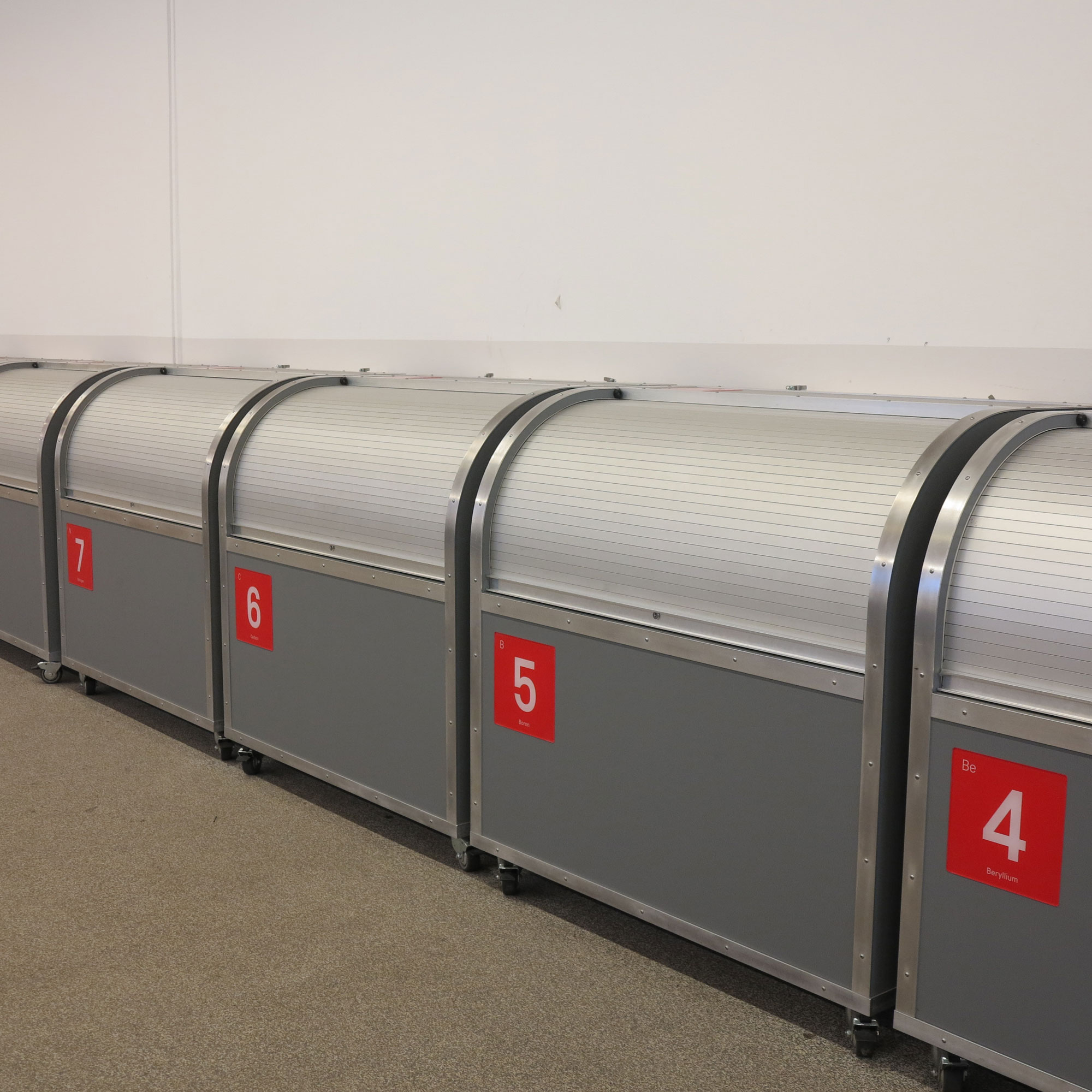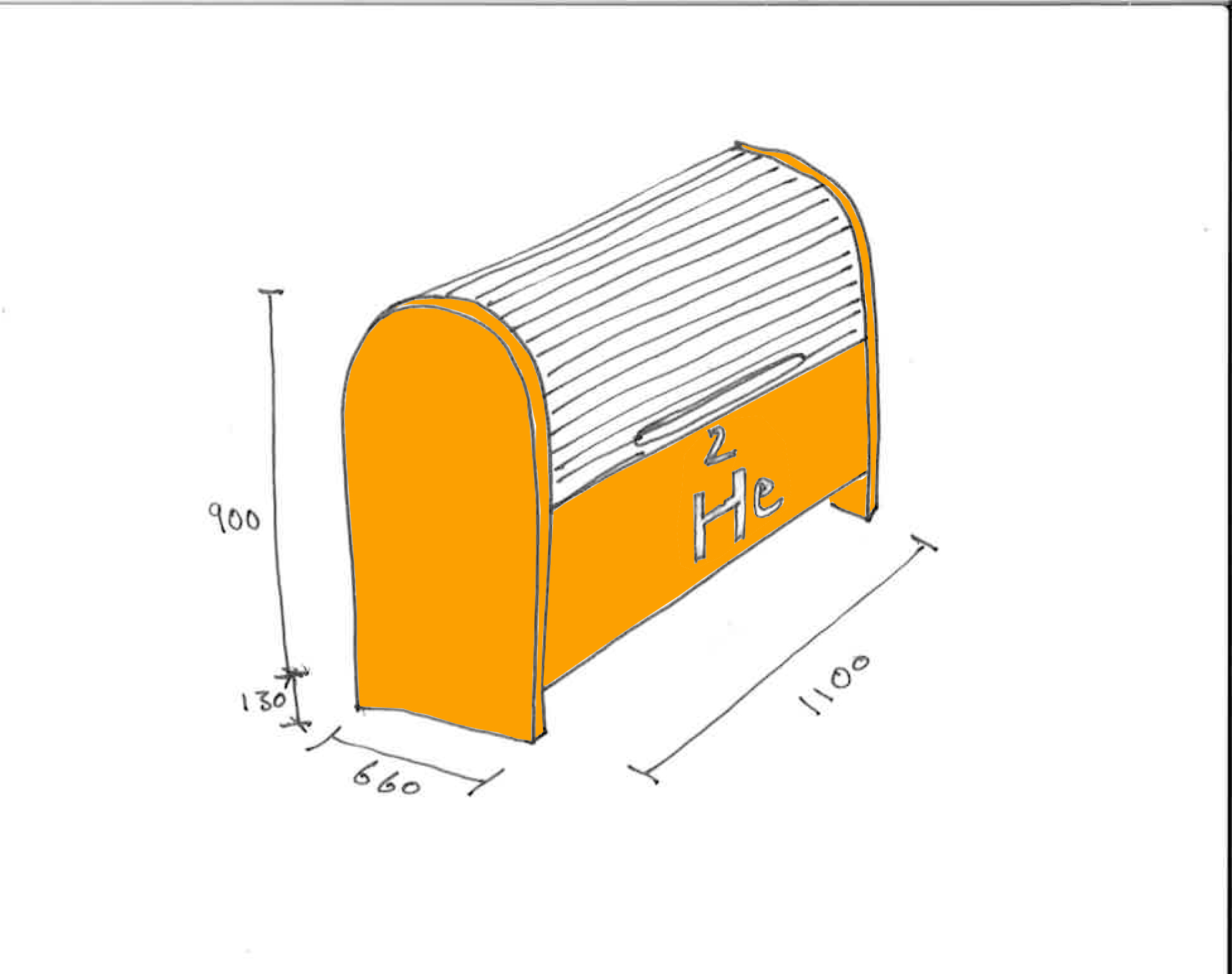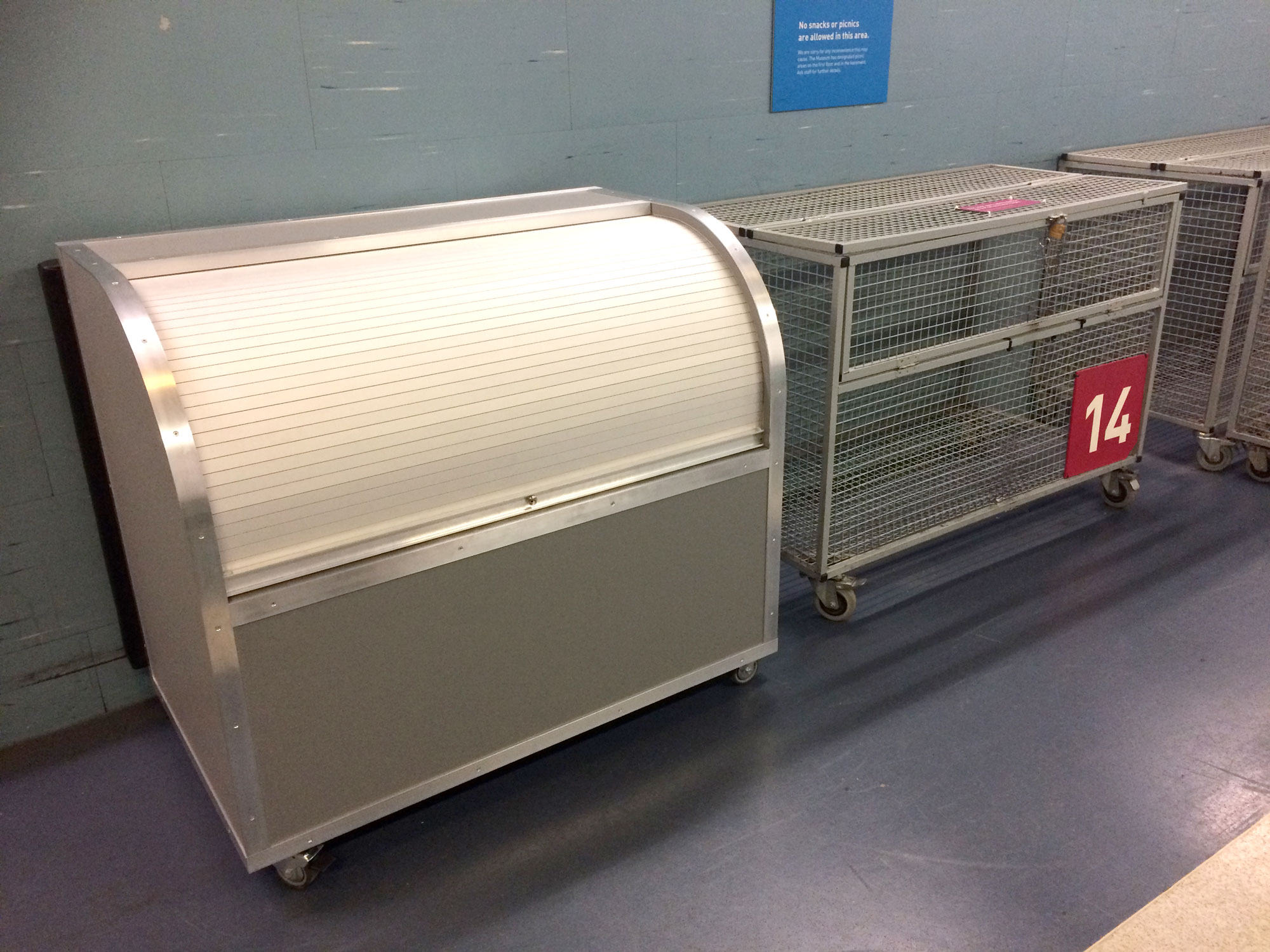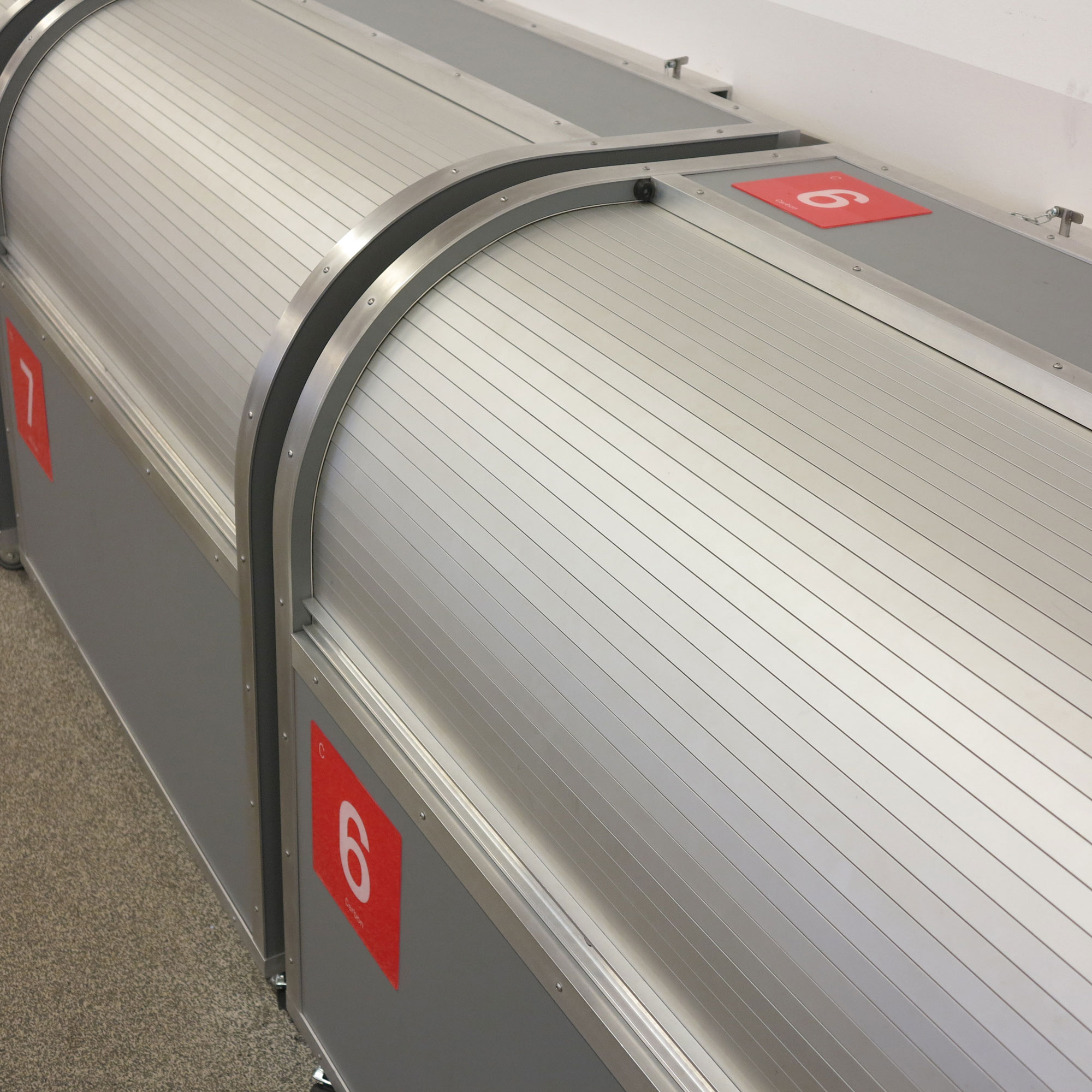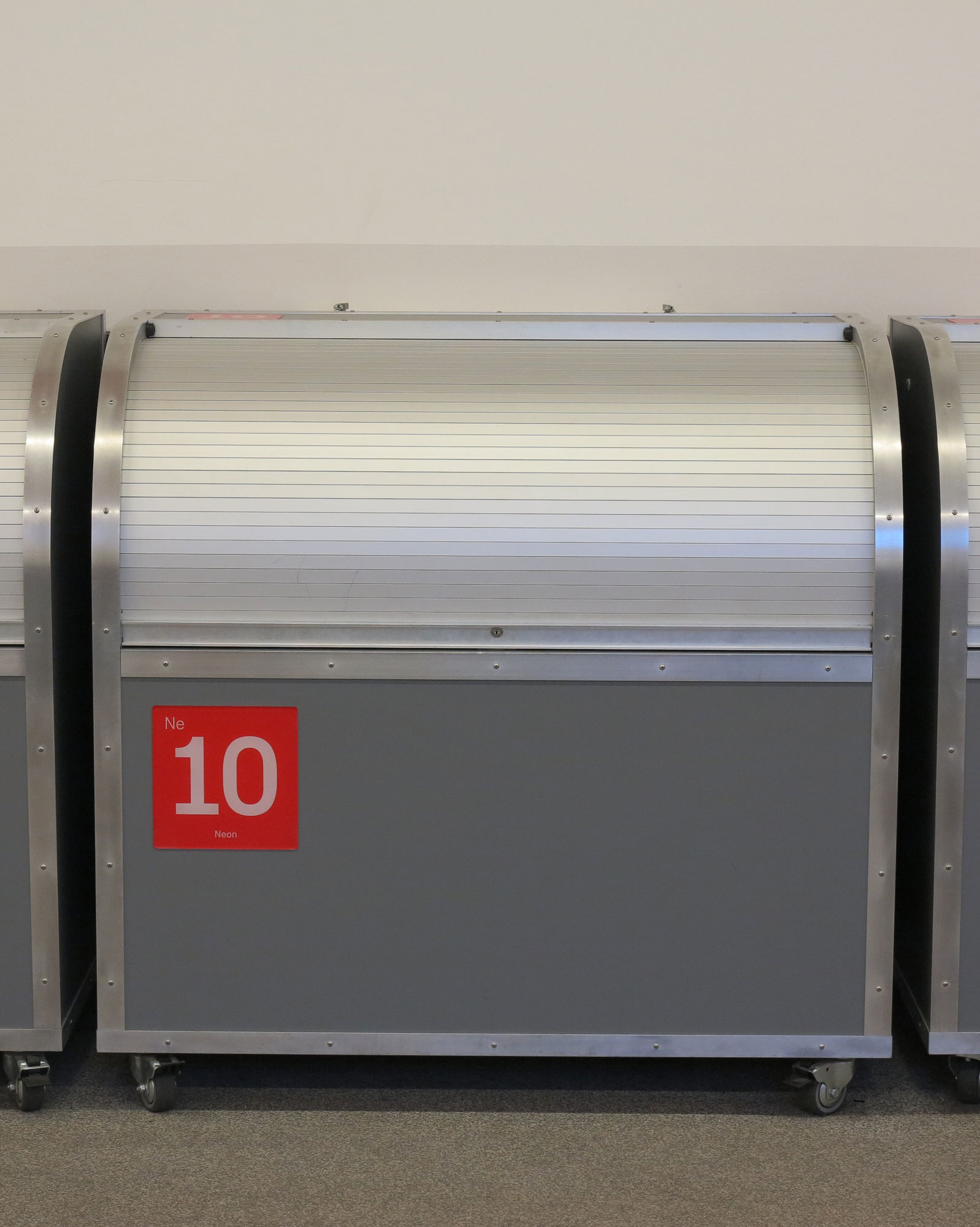One of the most challenging parts of the Groups Entrance project at the Science Museum was designing a box for school bags. It might not sound like much, but the brief was incredibly demanding and the process of prototyping and testing was thorough and rigorous.
Over half a million schoolchildren visit the Museum on group visits each year. Each group comes with bags and packed lunches, which they need to store safely while they tour the Museum, then access again to eat their lunch.
As there can be over 50 groups per hour entering the Museum, a lot of storage units are required and they must be easily identified at a glance. They need to be lockable for security, so require a lid - and must be roomy enough for 30 or more bags and lunchboxes. But they need to be easy to get to reach into, to get bags out quickly, for both children and adults.
Each unit needs to be extremely hard wearing, resistant to the worst that kids could throw at it, and with no mechanism that might break or bend. They must be waterproof inside and out, in case of spills, but with a permeable base so that any spilt liquid does not gather in the bottom of the box and soak all the belongings.
In addition, the boxes need to be locked in place but able to be wheeled away when required, to clear the space, or to be taken outside in the case of an emergency when the building would be evacuated and school children would need to be reunited with their belongings without reentering the building.
And of course, the units needed to look good and have a sense of the Museum's ethos and attitude running through the design.
